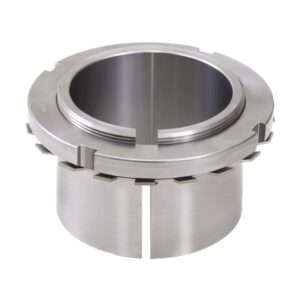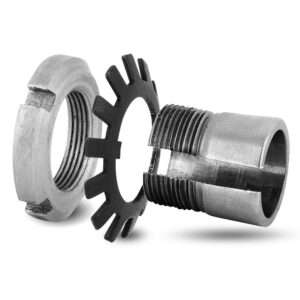Adapter sleeves
Table of Contents
Definition of Adapter Sleeves
Adapter sleeves are cylindrical components with a tapered bore used to mount bearings on shafts by facilitating a proper fit and alignment.
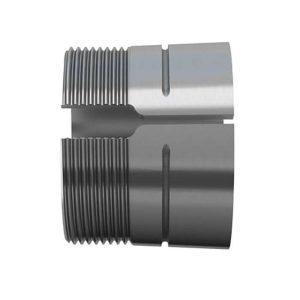
FHD Bearings is an ISO 9001:2015 certified manufacturing company stocking a wide range of adapter sleeves. With over 1,200 different bearing sizes and over 250K bearings in stock.
Materials of Adapter Sleeves
Carbon Steel
Carbon steel is a widely used material for adapter sleeves. It is composed primarily of iron and carbon, with trace amounts of other elements. It is known for its strength, hardness, and relatively low cost.
Alloy Steel
Alloy steel contains additional alloying elements such as chromium, nickel, or molybdenum, which enhance its mechanical properties compared to carbon steel. This results in improved strength, hardness, and resistance to wear and corrosion.
Tool Steel
Tool steel is a specialized type of alloy steel designed to have high hardness and wear resistance. It may include additional elements like tungsten or vanadium.

Stainless Steel
Stainless steel is an alloy that includes chromium, which provides corrosion resistance. It is often used in environments where rust or corrosion is a concern.
Features of Adapter Sleeves
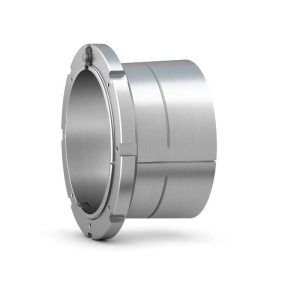
- Ease of Installation: The design of adapter sleeves allows for easy installation and removal, simplifying the mounting and dismounting process of bearings or other components on a shaft.
- Locknut and Lock Washer: Many adapter sleeves come with an integral locknut and lock washer. The locknut and washer combination helps secure the sleeve in place on the shaft and prevents unintended loosening.
- Tapered Bore: Adapter sleeves typically have a tapered bore, allowing them to be easily slid onto a cylindrical shaft. The taper provides a tight fit when mounted on the shaft.
- Oil Holes and Grooves: Some adapter sleeves feature oil holes and grooves to allow for easy lubrication and to distribute lubricant evenly, ensuring proper functioning of the bearing or component.
- Metric and Inch Sizes: Adapter sleeves are available in both metric and inch sizes, providing flexibility to accommodate different shaft dimensions based on international standards.
Advantages of Adapter Sleeves
- Facilitates Shaft Mounting: Adapter sleeves provide a convenient means of mounting bearings or other components onto cylindrical shafts, especially when dealing with tapered bore designs.
- Easy Installation and Removal: One of the primary advantages is the ease of installation and removal, making maintenance and assembly processes more efficient.
- EAdjustable Fit: The tapered design of adapter sleeves allows for a tight and adjustable fit on the shaft, enhancing the stability and performance of the mounted components.
- Versatility: Adapter sleeves are versatile and compatible with a variety of bearings and other components, offering flexibility in design and application.
- Vibration Damping: The sleeves can act as a buffer, dampening vibrations and reducing the transmission of shocks, contributing to smoother operation and increased bearing life.
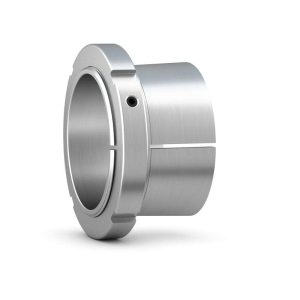
Taxonomy of Adapter Sleeves
Standard Adapter Sleeves
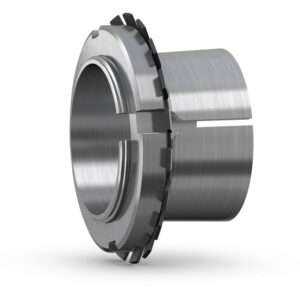
Adapter sleeve with KM lock nut and MB lock washer
Adapter sleeves are the most commonly used components for locating bearings with a tapered bore onto a cylindrical seat as they can be used on plain shafts or stepped shafts.
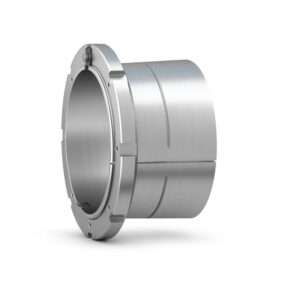
Adapter sleeve with KMFE lock nut
Adapter sleeves are the most commonly used components for locating bearings with a tapered bore onto a cylindrical seat as they can be used on plain shafts or stepped shafts.

Adapter sleeve with KML lock nut and MBL lock washer
Adapter sleeves are the most commonly used components for locating bearings with a tapered bore onto a cylindrical seat as they can be used on plain shafts or stepped shafts.
Sleeves for oil injection

Adapter sleeve for oil injection mounting with KMFE lock nut
These sleeves enable use of the oil injection method to mount and dismount bearings, and they are slit and are supplied complete with a KMFE lock nut.

Adapter sleeve for oil injection mounting with HM lock nut and MS locking clip
These sleeves enable use of the oil injection method to mount and dismount bearings, and they are slit and are supplied complete with a lock nut and locking device.
Applications of Adapter Sleeves
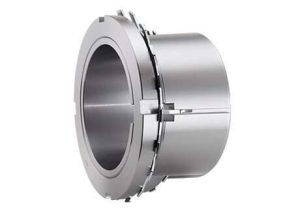
- Industrial Machinery: Adapter sleeves are extensively used in industrial machinery such as pumps, compressors, and conveyor systems where bearings require secure mounting on shafts.
- Power Transmission Systems: In power transmission systems, adapter sleeves play a crucial role in connecting and securing components like pulleys, gears, and sprockets to shafts.
- Mining Equipment: Mining machinery often utilizes adapter sleeves to mount bearings on shafts, providing a reliable and adjustable connection in harsh operating conditions.
- Agricultural Machinery: Tractors, harvesters, and other agricultural equipment use adapter sleeves to mount various components, ensuring efficient and durable operation in the field.
- Construction Equipment: Adapter sleeves are employed in construction machinery, including cranes and excavators, to facilitate the mounting of bearings and other rotating components on shafts.
- Paper and Pulp Industry: In paper and pulp processing equipment, adapter sleeves are utilized to mount bearings and other rotating elements, ensuring smooth and reliable operation during the production process.
Key Manufacturing Process of Adapter Sleeves
Material Selection
The process begins with selecting the appropriate raw materials, often high-quality steel or stainless steel. The chosen material should possess the required strength, durability, and machinability.
Cutting and Shaping
Raw materials are cut into the desired lengths, and the initial shaping of the adapter sleeves may involve processes such as forging or turning. Forging can be used to create the basic shape of the sleeve, while turning refines the dimensions and surface finish.
Heat Treatment
Heat treatment is a critical step to enhance the mechanical properties of the adapter sleeves. This process involves heating the sleeves to a specific temperature and then cooling them at a controlled rate to achieve the desired hardness, strength, and toughness.
Machining and Precision Grinding
Adapter sleeves undergo precision machining to achieve accurate dimensions and a smooth surface finish. This may include processes like CNC turning, milling, and grinding to meet tight tolerances and ensure proper fit on shafts.
Taper Bore Formation
Creating the tapered bore is a crucial step in the manufacturing process. This can be achieved through precision machining or grinding to ensure the proper taper angle required for a secure fit on the shaft.
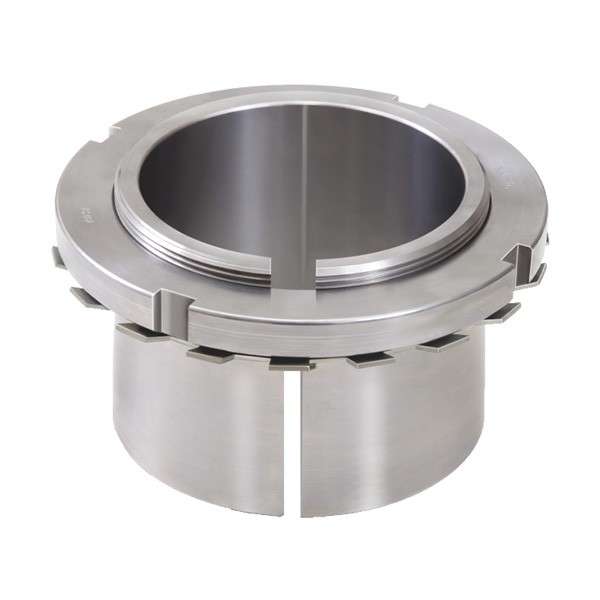
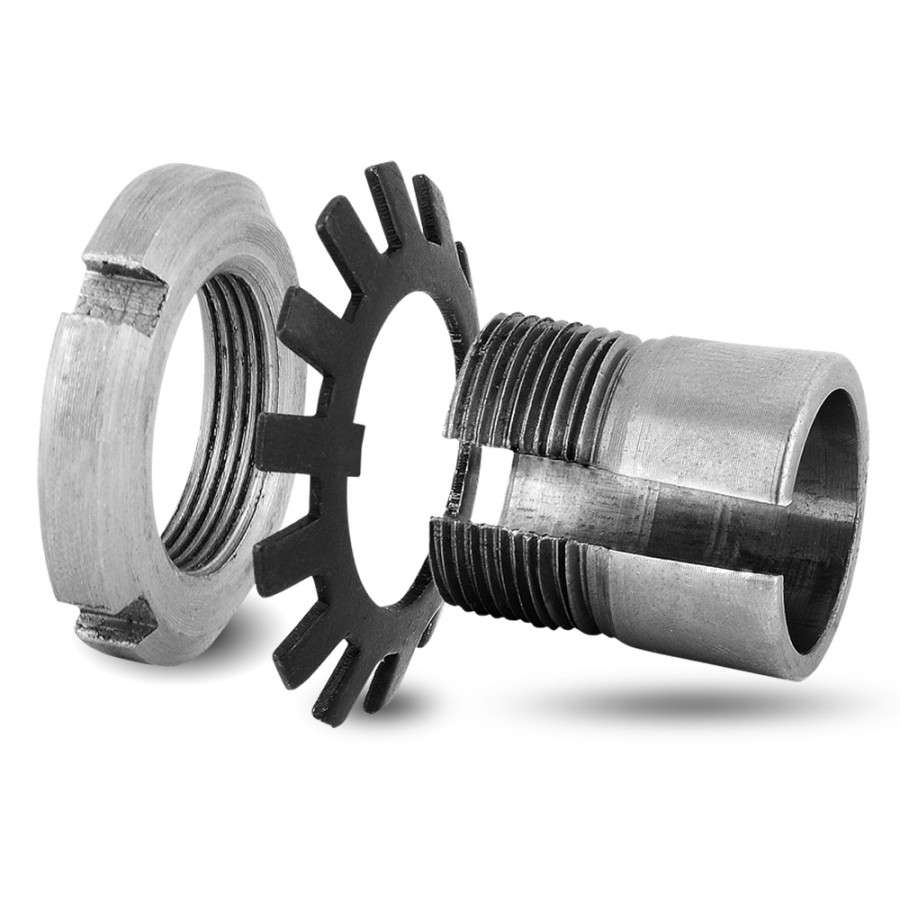
FAQ - Frequently Asked Questions

An adapter sleeve is a cylindrical device with a tapered bore that is used to mount bearings or other components on cylindrical shafts.
The tapered design allows for easy mounting on cylindrical shafts and provides a secure and adjustable fit.
Adapter sleeves find common use in industries such as manufacturing, power transmission, mining, agriculture, construction, and more.
Adapter sleeves are designed with a split design or can be easily disassembled, allowing for straightforward installation and removal without the need to slide over the end of the shaft.
Adapter sleeves are often made from high-quality materials such as carbon steel or stainless steel to provide strength and corrosion resistance.
Yes, adapter sleeves are available in both metric and inch sizes to accommodate various shaft dimensions.
The locknut and lock washer system secures the adapter sleeve on the shaft, preventing unintended loosening during operation.
Yes, adapter sleeves are designed to handle both radial and moderate axial loads.
Yes, adapter sleeves are versatile and compatible with various types of bearings and components.
Oil holes and grooves facilitate efficient lubrication, ensuring proper functioning of the bearings or components.
Adapter sleeves are typically mounted on shafts by tightening the locknut, which compresses the sleeve onto the shaft.
In many cases, yes. However, the condition of the adapter sleeve and the shaft should be inspected to ensure proper reusability.
Installation usually requires standard hand tools, but the use of a torque wrench for tightening the locknut to the recommended torque is recommended.
Adapter sleeves are specifically designed for tapered shafts, so they are not suitable for use with non-tapered shafts.
Surface treatments like phosphate coating or zinc plating enhance corrosion resistance, ensuring a longer lifespan.
Adapter sleeves can act as a buffer, dampening vibrations and reducing the transmission of shocks for smoother operation.
The suitability depends on the material of the adapter sleeve. Stainless steel sleeves are often used for high-temperature applications.
Yes, adapter sleeves can be used in both horizontal and vertical shaft applications, providing a secure mounting solution.
Regular inspection for wear, proper lubrication, and torque maintenance on the locknut are common maintenance practices.
Yes, alternatives include direct mounting, hydraulic mounting, and withdrawal sleeves, each with its own advantages depending on the application.
Installation and Maintenance of Adapter Sleeves
Installation
- Prepare the Shaft: Ensure that the shaft is clean and free from any debris or contaminants. Check for any burrs or irregularities that may hinder the smooth installation of the adapter sleeve.
- Inspect the Adapter Sleeve: Before installation, inspect the adapter sleeve for any damage or defects. Verify that the bore is clean and free from obstructions.
- Apply Lubrication: Apply a suitable lubricant to the tapered bore of the adapter sleeve. This lubrication helps in achieving a smooth and even mounting on the shaft.
- Position the Adapter Sleeve on the Shaft: Slide the adapter sleeve onto the shaft with the tapered bore facing outward. Position it at the desired location along the shaft, taking into consideration any axial or radial adjustments needed.
- Tighten the Locknut: Thread the locknut onto the adapter sleeve, leaving it loose initially. Use the appropriate tool, such as a spanner or socket wrench, to tighten the locknut. This process compresses the adapter sleeve onto the shaft.
- Check Alignment: While tightening the locknut, periodically check the alignment of the adapter sleeve and the component being mounted. Ensure that the adapter sleeve is seated evenly on the shaft and that there is no misalignment.
- MVerify Torque: Refer to the manufacturer’s specifications for the recommended torque value for the locknut. Use a torque wrench to achieve the specified torque, ensuring proper compression of the adapter sleeve onto the shaft.
- Secure with Lock Washer: If the adapter sleeve is equipped with a lock washer, position it against the locknut and secure it in place. The lock washer helps prevent the locknut from unintentional loosening during operation.
Maintenance:
- Regular Inspection: Perform regular visual inspections of the adapter sleeves to check for signs of wear, damage, or corrosion. Inspect the bore for any debris or contaminants that may affect the mounting process.
- Lubrication: Ensure that the tapered bore and any threads on the adapter sleeve are adequately lubricated. Proper lubrication helps in achieving smooth mounting and dismounting operations.
- Check for Proper Alignment: During maintenance, inspect the alignment of the adapter sleeves with the mounted components. Misalignment can lead to uneven loading and premature wear.
- Verify Torque on Locknut: Periodically check the torque on the locknut to ensure it is within the manufacturer’s recommended specifications. An improperly tightened locknut can result in loosening during operation.
- Inspect Lock Washer (if applicable): If the adapter sleeve is equipped with a lock washer, inspect its condition. Ensure that it is securely in place and not damaged, as the lock washer plays a role in preventing unintentional loosening.
- Examine Shaft and Mounting Surface: Check the shaft and mounting surface for any signs of damage or wear. A damaged shaft or mounting surface can affect the effectiveness of the adapter sleeve.
- Reapply Lubrication as Needed: If the environment is harsh or if the adapter sleeve is exposed to contaminants, reapply lubrication as needed to maintain optimal performance and prevent corrosion.


